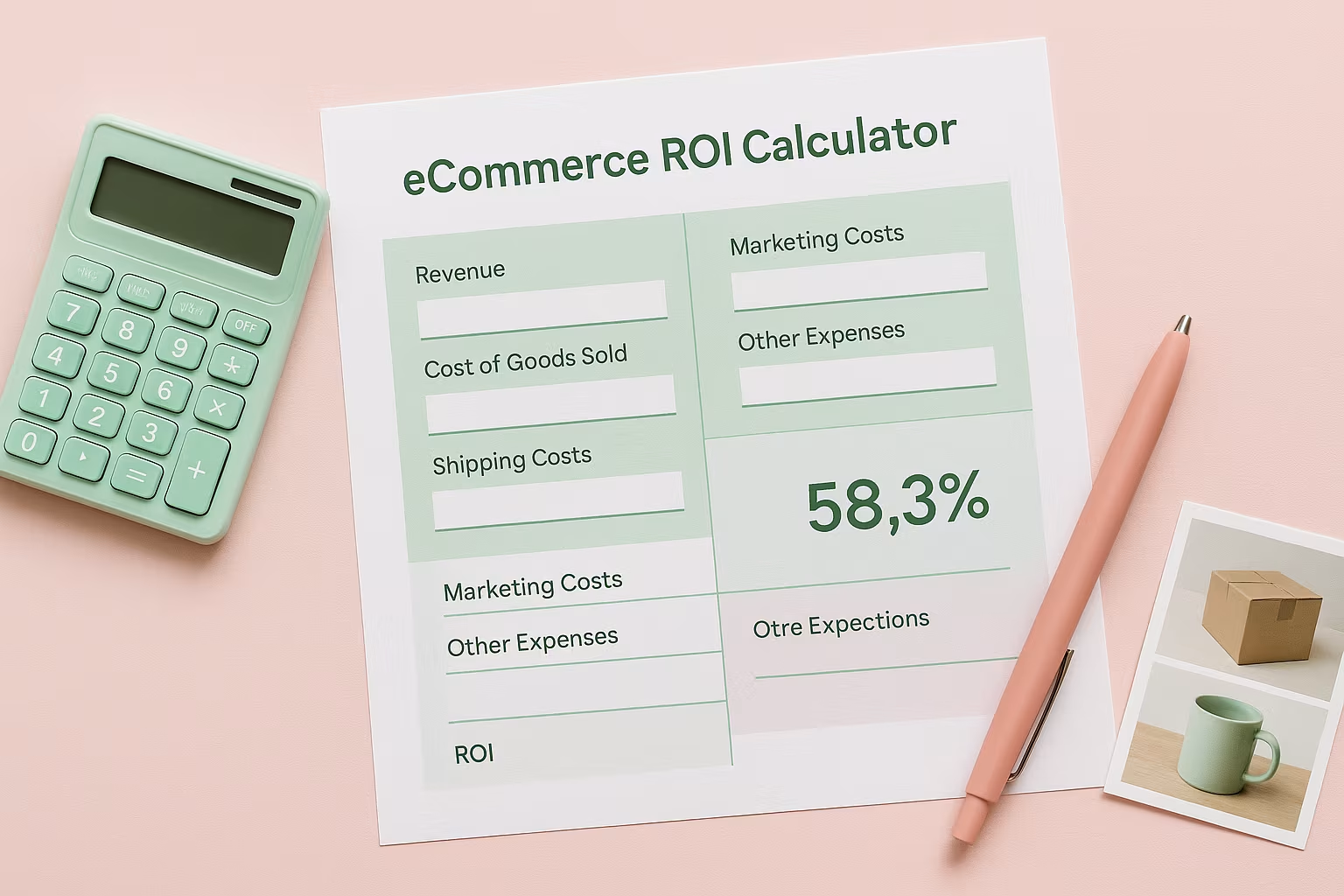How to Scale Your SKU Count Without Slowing Fulfillment? Inventory Management Technique

Expanding your product catalog is a natural move for growing e-commerce brands. Retailers with broader assortments can see up to 20% higher average order values.
But as SKU counts rise, so do risks: inventory errors, shipping delays, and fulfillment slowdowns.
That’s why it’s essential to know how to scale your SKU count without slowing fulfillment, so you can grow your offerings without sacrificing efficiency or customer satisfaction.
Optimizing Inventory Management Systems to Scale Your SKU Count
As your SKU count grows, your inventory management systems need to evolve accordingly. Manual processes that worked with a handful of products quickly become unmanageable as your catalog expands.
Implement Robust Inventory Management Software
Investing in a comprehensive inventory management system is non-negotiable when scaling the SKU count. The right software will provide real-time visibility across all products, automate reordering processes, and integrate with your sales channels.
Look for solutions that offer:
- Barcode scanning capabilities
- Low stock alerts
- Forecasting tools
- Multi-channel inventory synchronization
- Supplier management features
These systems eliminate the manual record-keeping that often creates bottlenecks during scaling and help prevent both stockouts and overstock situations.
Establish Clear SKU Naming Conventions

A systematic approach to SKU numbering becomes increasingly important as your product catalog grows. Consistent naming conventions make it easier for staff to locate products, reduce picking errors, and improve overall efficiency.
Effective SKU systems typically include:
- Department or category codes
- Product identifiers
- Variation indicators (size, color, etc.)
- Supplier references, when relevant
For example, a coffee product SKU might look like "COF-DARK-12OZ-ORG" to represent the category (coffee), type (dark roast), size (12 oz), and attribute (organic).
Implementing a structured SKU numbering system for your Shopify store is particularly valuable for maintaining organization as you scale.
Utilize ABC Analysis for Inventory Prioritization
As SKU count increases, not all products deserve equal attention. ABC analysis categorizes inventory based on importance:
- A items: High-value products that generate the most revenue
- B items: Mid-value products with moderate sales
- C items: Low-value products with minimal contribution to revenue
This classification allows you to allocate warehouse space and resources more efficiently. For instance, 'A' items should be placed in prime picking locations, while 'C' items can be stored in less accessible areas.
This strategic approach ensures your most important products remain easy to access even as your catalog expands.
Restructuring Warehouse Operations
A growing product catalog demands a more sophisticated approach to warehouse layout and picking procedures. Without proper adjustments, fulfillment speed inevitably suffers.
Optimize Warehouse Layout for Efficient Picking
As you add SKUs, your warehouse layout should evolve to minimize travel time between picks. Consider these strategies:
- Zone-based organization: Group similar products together and assign specific staff to each zone.
- Forward picking locations: Place fastest-moving items in easily accessible areas.
- Slotting optimization: Regularly review and adjust product placement based on sales velocity.
- Vertical space utilization: Implement proper shelving and racking systems to maximize storage capacity.
Pro tip: Create a heat map of your warehouse that visually displays picking frequency for different locations. This tool can highlight inefficiencies in your current layout and guide reorganization efforts.
Implement Batch Picking and Wave Processing
As SKU count increases, switching from single-order picking to batch processing becomes essential for maintaining efficiency.
Batch picking allows workers to collect items for multiple orders simultaneously, significantly reducing travel time throughout the warehouse.
Wave processing takes this concept further by grouping orders with similar characteristics (product types, shipping methods, etc.) to be processed together. This approach maximizes labor efficiency while ensuring timely order fulfillment across your expanded product line.

Consider Automation for High-Volume SKUs
For businesses with rapidly expanding SKU counts, strategic automation can preserve fulfillment speed without requiring proportional increases in labor. Options to consider include:
- Conveyor systems for moving products between zones
- Automated storage and retrieval systems (AS/RS)
- Pick-to-light or voice picking technology
- Robotic picking assistants
While full warehouse automation requires significant investment, implementing targeted solutions for your highest-volume SKUs can yield impressive efficiency gains while allowing for continued catalog expansion.
Leveraging Fulfillment Partners
Beyond internal optimizations, external partnerships offer powerful ways to scale your SKU count without compromising fulfillment speed.
Explore 3PL Solutions for Specialized Products.
Third-party logistics (3PL) providers can be valuable partners when expanding into product categories with unique handling requirements. Choosing the right fulfillment center becomes crucial as your product diversity increases.
For example, if your core business sells shelf-stable supplements but you want to expand into refrigerated products, partnering with a 3PL that specializes in temperature-controlled fulfillment allows you to add these SKUs without investing in specialized infrastructure.
Consider segmenting your inventory among multiple fulfillment partners based on product characteristics or geographic distribution to maintain speed while expanding your catalog.
Implement Dropshipping for Testing New Product Categories
When exploring entirely new product categories, dropshipping provides a low-risk way to test market demand before committing to inventory. This model allows you to add SKUs without immediately impacting your warehouse operations.
The key to successful integration is finding reliable suppliers and implementing systems that maintain visibility across fulfillment methods. Many businesses use a hybrid approach, stocking their core, proven products while dropshipping newer or more specialized items.
For those looking to scale a dropshipping business alongside inventory-based operations, ensuring a seamless customer experience across fulfillment methods is essential.

Utilize Specialized Fulfillment Platforms
Platforms like Supliful's fulfillment solution offer specialized services that allow for rapid SKU expansion in certain categories.
These partners handle production, inventory management, and shipping for entire product categories, enabling you to add numerous SKUs without operational disruption.
This approach is particularly valuable for complex products with specific manufacturing requirements. For instance, businesses can quickly expand their store's product range with private label skincare or private label coffee without developing manufacturing expertise or managing raw materials.
Technology Integration for Seamless Operations
As your product catalog grows, technology becomes increasingly important for maintaining operational cohesion across systems.
Ensure E-commerce Platform and Inventory System Integration
Seamless communication between your e-commerce platform and inventory management system is critical when scaling the SKU count.
This integration ensures that stock levels update in real-time across all sales channels, preventing overselling and the fulfillment delays that result.
For Shopify users, selecting inventory management solutions with native Shopify integration significantly reduces the technical challenges of scaling.
Similarly, businesses selling through newer platforms should prioritize solutions that support these channels, such as TikTok Shop fulfillment integration.
Implement Order Management Systems With Multi-Channel Capabilities
As both SKU count and sales channels increase, a robust order management system (OMS) becomes essential. The right OMS centralizes orders from all platforms, applies consistent routing rules, and maintains visibility throughout the fulfillment process.
Look for systems that offer:
- Automated order routing based on inventory location
- Integration with multiple shipping carriers
- Order status tracking and notifications
- Returns management capabilities
These capabilities ensure consistent fulfillment performance even as order complexity increases with a broader product catalog.
Utilize Data Analytics for Continuous Optimization
Data-driven decision making becomes increasingly valuable as the SKU count grows. Implement analytics tools that provide insights into:
- Individual SKU performance metrics
- Fulfillment efficiency by product category
- Inventory turnover rates
- Order accuracy and shipping times
These insights help identify which product expansions have been successful and which areas of your fulfillment operation require attention as you continue to scale.
Scaling Your Team Alongside Your Catalog
People remain a critical component of successful scaling. As your SKU count grows, your team needs both expansion and specialization.
Develop Specialized Roles Within Your Fulfillment Team
With a larger product catalog, generalist warehouse roles often become less efficient. Consider creating specialized positions:
- Dedicated receivers who focus solely on incoming inventory
- Zone-specific pickers who become experts in particular product categories
- Quality control specialists who verify order accuracy
- Inventory management personnel who focus on stock levels and reordering
This specialization allows team members to develop deeper expertise in specific areas, improving both speed and accuracy.
Create Comprehensive Training Programs and Documentation
As product variety increases, comprehensive documentation becomes essential for maintaining consistent operations. Develop detailed resources including:
- Product handling guides for items with special requirements
- Visual picking aids with product images
- Process flowcharts for different order types
- Troubleshooting procedures for common issues
These resources ensure that new team members can quickly reach productivity and help existing staff adapt to an expanding product line without sacrificing fulfillment quality.
Tip Worth Knowing: Forecast-Driven Slotting for Scaling SKUs
Here’s an insider’s tip even seasoned operators overlook: don’t just organize based on past sales, slot SKUs based on future demand forecasts. Move “rising star” products into high-access pick zones before sales spike due to seasonal trends or campaigns.
Use inventory tools with predictive analytics that update weekly. This approach minimizes fulfillment delays and labor strain, especially for Shopify brands scaling in fast-moving niches like supplements or skincare.
Ready to Scale? Take Strategic Action Today
Successfully scaling your SKU count without sacrificing fulfillment speed requires a strategic, system-wide approach. It’s not just about adding more products; it’s about upgrading your operations in parallel.
Start by identifying potential bottlenecks in your current setup. Invest in the right tech, optimize your warehouse layout, and build a specialized team that can scale with your catalog.
Strategic partnerships with fulfillment experts can also help you expand into new product categories without slowing down.
FAQ
Related blogs

Break-Even ROAS Calculator: Find Out What You Can Afford to Spend on Ads

Ecommerce ROI Calculator: Scale Your Store

Customer Lifetime Value Calculator: Unlock Your E-commerce Revenue Potential


